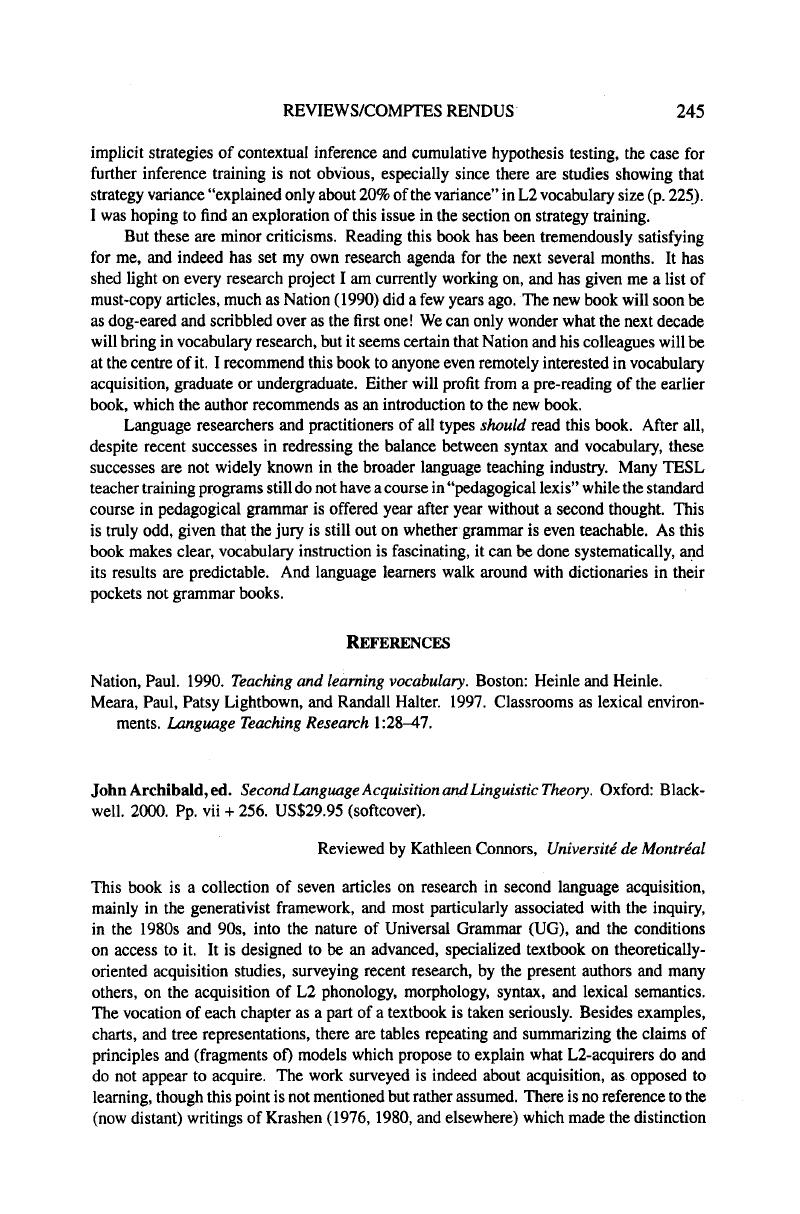No CrossRef data available.
Article contents
John Archibald, ed. Second Language Acquisition and Linguistic Theory. Oxford: Blackwell. 2000. Pp. vii + 256. US$29.95 (softcover).
Published online by Cambridge University Press: 27 June 2016
Abstract
An abstract is not available for this content so a preview has been provided. Please use the Get access link above for information on how to access this content.

- Type
- Reviews/Comptes rendus
- Information
- Canadian Journal of Linguistics/Revue canadienne de linguistique , Volume 46 , Issue 3-4 , December 2001 , pp. 245 - 251
- Copyright
- Copyright © Canadian Linguistic Association 2001
References
Birdsong, David. 1989. Metalinguistic performance and interlinguistic competence. Berlin: Springer-Verlag.CrossRefGoogle Scholar
Coppieters, René. 1987. Competence differences between native and near-native speakers. Language
63:544–573.Google Scholar
Krashen, Stephen D.
1976. Formal and informal linguistic environments in language learning and language acquisition. TESOL Quarterly
10:157–168.Google Scholar
Krashen, Stephen D.
1980. Attitude and aptitude in relation to second language acquisition and learning. In Individual differences and universals in language learning aptitude, ed. Diller, Karl C., 155–175. Rowley: Newbury House.Google Scholar
Paradis, Michel. 1978. The stratification of bilingualism. In Aspects of bilingualism, ed. Paradis, Michel, 165–175. Columbia: Hornbeam Press.Google Scholar
White, Lydia. 1989. Universal grammar and second language acquisition. Amsterdam: Benjamins.CrossRefGoogle Scholar
White, Lydia. 1996. Universal grammar and second language acquisition: Current trends and new directions. In Handbook of language acquisition, ed. Ritchie, William C. and Bhatia, Tej K., 85–120. New York: Academic Press.Google Scholar
White, Lydia, and Genesee, Fred. 1996. How native is near-native? The issue of ultimate attainment in adult second language acquisition. Second Language Research
12:238–265.CrossRefGoogle Scholar




